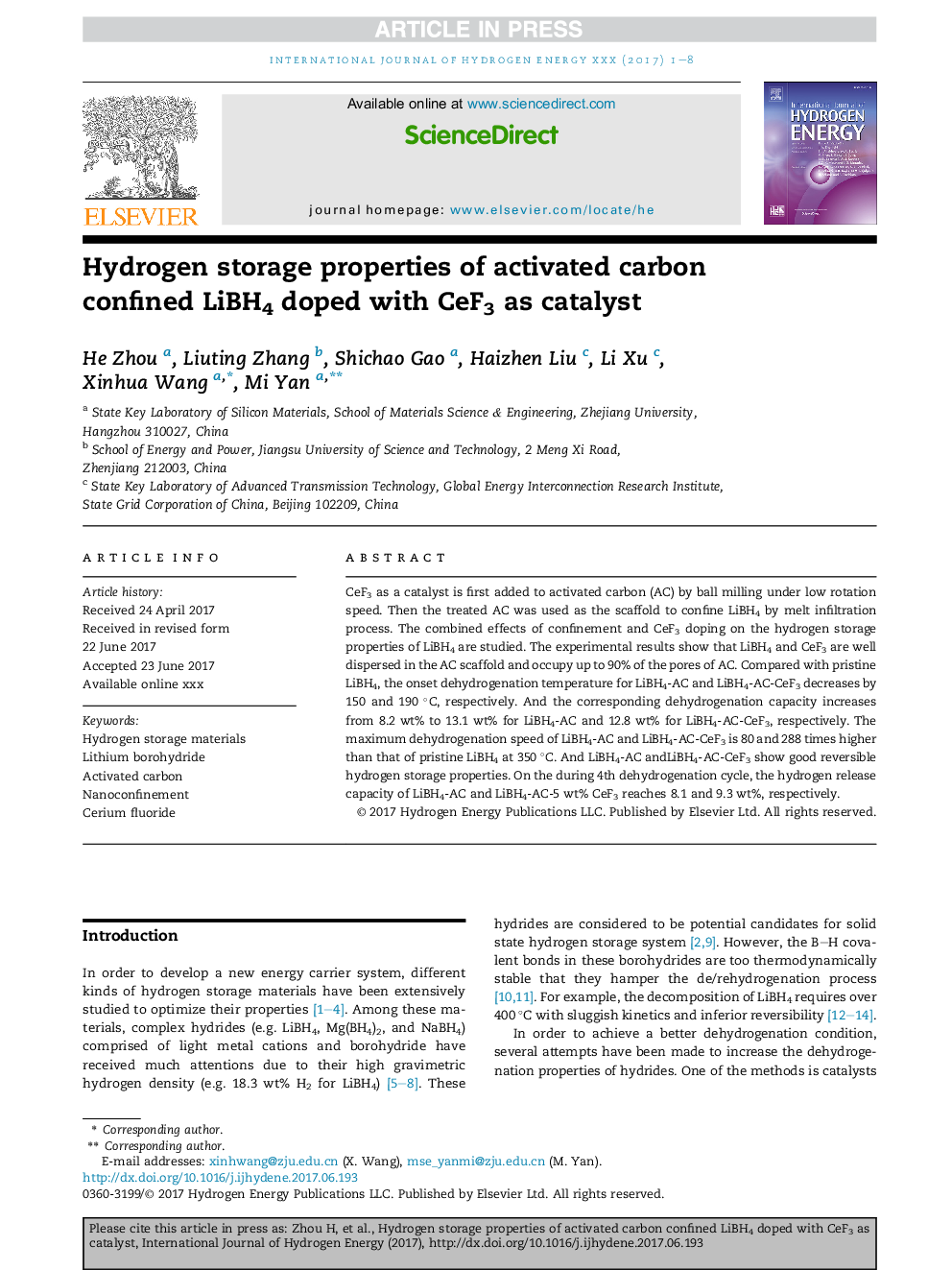| Article ID | Journal | Published Year | Pages | File Type |
|---|---|---|---|---|
| 5145289 | International Journal of Hydrogen Energy | 2017 | 8 Pages |
Abstract
CeF3 as a catalyst is first added to activated carbon (AC) by ball milling under low rotation speed. Then the treated AC was used as the scaffold to confine LiBH4 by melt infiltration process. The combined effects of confinement and CeF3 doping on the hydrogen storage properties of LiBH4 are studied. The experimental results show that LiBH4 and CeF3 are well dispersed in the AC scaffold and occupy up to 90% of the pores of AC. Compared with pristine LiBH4, the onset dehydrogenation temperature for LiBH4-AC and LiBH4-AC-CeF3 decreases by 150 and 190 °C, respectively. And the corresponding dehydrogenation capacity increases from 8.2 wt% to 13.1 wt% for LiBH4-AC and 12.8 wt% for LiBH4-AC-CeF3, respectively. The maximum dehydrogenation speed of LiBH4-AC and LiBH4-AC-CeF3 is 80 and 288 times higher than that of pristine LiBH4 at 350 °C. And LiBH4-AC andLiBH4-AC-CeF3 show good reversible hydrogen storage properties. On the during 4th dehydrogenation cycle, the hydrogen release capacity of LiBH4-AC and LiBH4-AC-5 wt% CeF3 reaches 8.1 and 9.3 wt%, respectively.
Keywords
Related Topics
Physical Sciences and Engineering
Chemistry
Electrochemistry
Authors
He Zhou, Liuting Zhang, Shichao Gao, Haizhen Liu, Li Xu, Xinhua Wang, Mi Yan,
